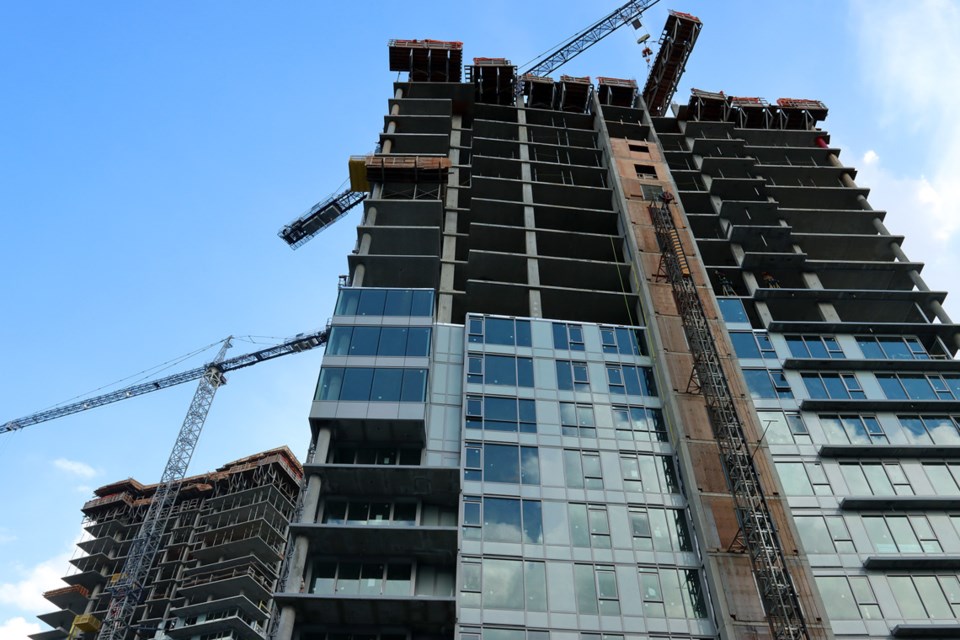Port Moody council will form a task force to study the role building materials might play in the city’s goal to reduce its greenhouse gases from construction by 40% in the next nine years.
The initiative is a response to a report introduced Tuesday by Coun. Steve Milani that called for city staff to come up with ways to encourage builders to use mass timber when constructing buildings over six storeys tall, while phasing out the use of concrete as a main construction material.
Milani said banning concrete high-rise construction in Port Moody would make the city a leader, “setting the stage for other municipalities to follow.”
He told council mass timber buildings have less of an impact on the environment because they can be constructed faster, components can be dismantled and reused rather than sent to landfills, and the construction process is less disruptive to neighbours. They also create much-needed jobs for the province’s lumber industry.
“Mass timber is a viable option for buildings up to 12 storeys,” Milani said. “Anything that is going to help us reduce those greenhouse gases.”
But some councillors accused Milani of trying to advance a political agenda by wrapping his disapproval for high-rise construction in Port Moody in a climate change cloak as mass timber construction has yet to be tested beyond a height of about 85 metres.
“There’s a very one-sided view to this report,” Coun. Diana Dilworth said, adding even mass timber construction still relies on the use of concrete for foundations and other forms.
“To say we want to ban concrete is cutting off our nose to spite our face.”
Coun. Zoë Royer said discouraging concrete construction could, in fact, increase greenhouse gases by encouraging urban sprawl away from the city’s rapid transit stations that reduce the need for vehicle use. She also pointed out mass timber’s viability hasn’t yet been proven on a grand scale.
“We’ve not yet done mass timber in the community,” she said, pointing out even talk of mass timber construction as part of the proposed redevelopment of the city’s 23- acre Woodland Park neighbourhood hasn’t yet produced an actual architectural plan.
“Once we’ve done one, that would be an extraordinary learning opportunity.”
Mayor Rob Vagramov agreed.
“I am waiting to see this new technology come to the city,” he said. “I would be interested to know if it’s possible.”
The president and CEO of the Cement Association of Canada, an industry organization based in Ottawa, said any decisions about the role of building materials in combatting climate change must be based on science and data.
“If politicians are going to say we have a climate emergency, they need to examine every decision they make so it’s consistent with their views on fighting climate change,” Michael McSweeney told the Tri-City News. “We can’t be greenwashing.”
McSweeney said he’s “never seen somebody try and ban a building material that is authorized for use in the national and provincial building codes.”
He said concrete manufacturers are working to decrease their carbon footprint. He pointed to the local nature of the product that requires it to be transported less than 60 km from plant to worksite for pouring as well as the development of Portland cement that grinds a portion of its limestone content instead of superheating it, resulting in a greenhouse gas savings of about 10%.
In October, 2019, Port Moody council passed a motion for staff to investigate the advantages of Portland cement.
Coun. Hunter Madsen, who championed that motion, said it behooves the city to proceed with eyes wide open.
“As compelling the story for mass timber is, there are other pieces to it.”



